Für LiDAR Polygonspiegel und Scannermotoren Vol.1
Für LiDAR Polygonspiegel und Scannermotoren Vol.1
Kapitel 2
Alternative Technology for LiDAR Scanning
POLYGON vs. Galvanometer
The following is a comparison of Polygon scanners and Galvanometer scanners. (See cross-reference below.)
1. SCAN ANGLE
| POLYGON | GALVO |
|---|---|
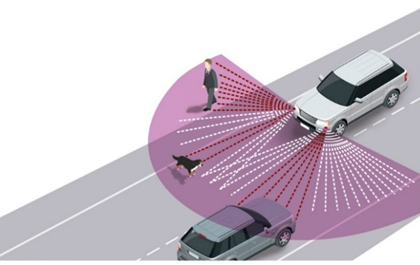 |
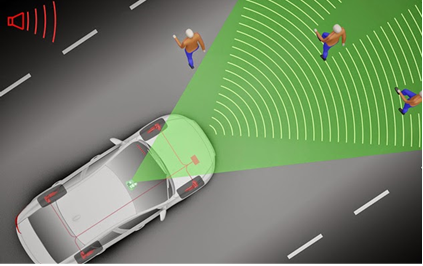 |
| A four sided polygon will provide a 120 degree optical field of view. A wider field of view is possible using a three facets mirror and a 360 degrees view is possible by illuminating multiple facets. This is not possible with a galvanometer scanner. | Typically limited to +/- 20 degree mechanical or 80 degrees optical. |
| Good | Bad |
| POLYGON Good |
 A four sided polygon will provide a 120 degree optical field of view. A wider field of view is possible using a three facets mirror and a 360 degrees view is possible by illuminating multiple facets. This is not possible with a galvanometer scanner.
|
|---|---|
| GALVO Bad |
 Typically limited to +/- 20 degree mechanical or 80 degrees optical.
|
2. SPEED STABILITY
| POLYGON | GALVO |
|---|---|
 |
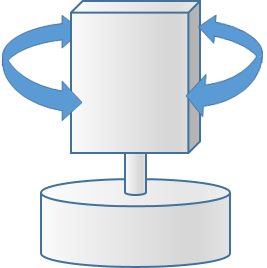 |
| Polygon scanners can operate at various speeds, ranging from a few hundred RPMs up to 50K RPM while still maintaining high speed stability. This allows LIDAR units equipped with polygons to capture high resolution images at a wide FOV (Field of View) even for long distance measurements. | Galvanometers have a non-linear scan rate which means that the scan speed is fastest at the center and slowest at the corners. This produces a low resolution image directly ahead of the vehicle and high resolution images as you approach the corners. |
| Good | Bad |
| POLYGON Good |
 Polygon scanners can operate at various speeds, ranging from a few hundred RPMs up to 50K RPM while still maintaining high speed stability. This allows LIDAR units equipped with polygons to capture high resolution images at a wide FOV (Field of View) even for long distance measurements.
|
|---|---|
| GALVO Bad |
 Galvanometers have a non-linear scan rate which means that the scan speed is fastest at the center and slowest at the corners. This produces a low resolution image directly ahead of the vehicle and high resolution images as you approach the corners.
|
3. SCAN RATE and POWER COMSUMPTION
| POLYGON | GALVO |
|---|---|
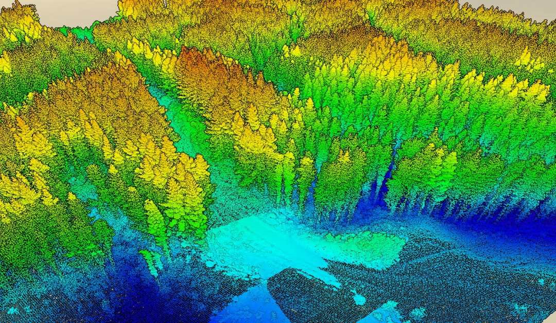 |
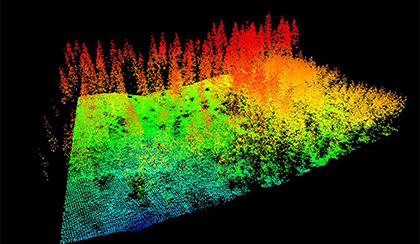 |
|
LiDAR requires a large aperture for collecting as many scare photons as possible reflected from a distant target. Polygons can have large apertures while still being able to scan at high speeds with low power consumption. Polygon scanners can scan fast with low power consumption with large apertures. The Polygon scanners have a constant scan speed and require relatively low power to scan 10X faster than a reciprocating galvo scanner. |
A galvanometer is a reciprocating device, so at maximum speed, the scan rate is not linear and power consumption is very high. (Could reach hundreds of watts) Small aperture galvo scanners can scan fast but the small aperture limits the range. The Y-axis galvo scanner, incidentally, is moving relatively slowly so power consumption is low. |
| Good | Bad |
| POLYGON Good |
 LiDAR requires a large aperture for collecting as many scare photons as possible reflected from a distant target. Polygons can have large apertures while still being able to scan at high speeds with low power consumption. Polygon scanners can scan fast with low power consumption with large apertures. The Polygon scanners have a constant scan speed and require relatively low power to scan 10X faster than a reciprocating galvo scanner.
|
|---|---|
| GALVO Bad |
 A galvanometer is a reciprocating device, so at maximum speed, the scan rate is not linear and power consumption is very high. (Could reach hundreds of watts) Small aperture galvo scanners can scan fast but the small aperture limits the range. The Y-axis galvo scanner, incidentally, is moving relatively slowly so power consumption is low.
|
4. COST
| POLYGON | GALVO |
|---|---|
| LiDAR does not require the most accurate galvo scanners, but high reliability is essential. High reliablity, high accuracy, polygon scanners can be more competitive than galvanometers. |
Low accuracy, low reliability galvanometers scanners are available for less than $100, but High reliability, high accuracy, galvanometer scanners cost hundreds of dollars. |
| Better | Good |
| POLYGON Better |
LiDAR does not require the most accurate galvo scanners, but high reliability is essential. High reliablity, high accuracy, polygon scanners can be more competitive than galvanometers.
|
|---|---|
| GALVO Good |
Low accuracy, low reliability galvanometers scanners are available for less than $100, but High reliability, high accuracy, galvanometer scanners cost hundreds of dollars.
|
5. THERMAL ISSUE / LIFE
| POLYGON | GALVO |
|---|---|
| Long life. Temperature resistant: can operate in both high and low temperatures. No need for heat sinks or active cooling. |
Requires Need direct heat sinking. In addition, the galvanometer's controller is very exspensive in terms of power consumption needs high power and requires large heat sinks for cooling. |
| Good | Bad |
| POLYGON Good |
Long life.
Temperature resistant: can operate in both high and low temperatures. No need for heat sinks or active cooling. |
|---|---|
| GALVO Bad |
Requires Need direct heat sinking. In addition, the galvanometer's controller is very exspensive in terms of power consumption needs high power and requires large heat sinks for cooling.
This is not ideal for a design that requires conductive to a compact LIDAR scanner on a that is to be used in varying environments such as a hot summer's day. Active cooling will also be required. |
Polygon scanners have the advantage over galvanometers thanks to its ability to be a cost effective solution to achieve high accuracy scans with flexible operating ranges and long life.
Study on MEMS LiDAR
A few years ago, MEMS scanning mirrors promised to be a low cost replacement for polygon and galvo scanners. Some thought MEMS was Solid State technology but it is not. MEMS are small, fragile, mechanical mirrors. They are upset by vehicle motion and the scan speed is a function of temperature. You cannot tell where they are pointing. At speed, a MEMS scanner is a resonant device which means it scans fastest in the middle and slowest at the end of each scan. This means the center of the scan has the lowest resolution, the opposite of what is wanted for LiDAR. Polygon mirror facets are typically flat to λ/4 @ 633nm. This is excellent for high resolution scanning to hundreds of meters. It is difficult to find a flatness spec on MEMS mirrors. The thin, fragile MEMS mirror flatness has been described as a potato chip! This limits MEMS to very short range scanning. MEMS mirrors are suspended between very fine torsion bars which will abruptly break at the end of their life. Claims that MEMS scanners are solid state are false.






